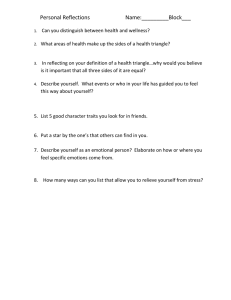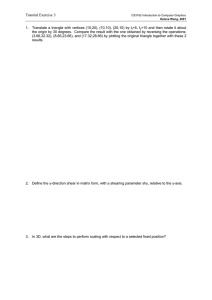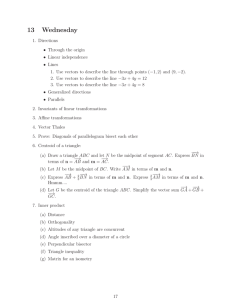Math 265 Quiz 2C – Solutions
advertisement
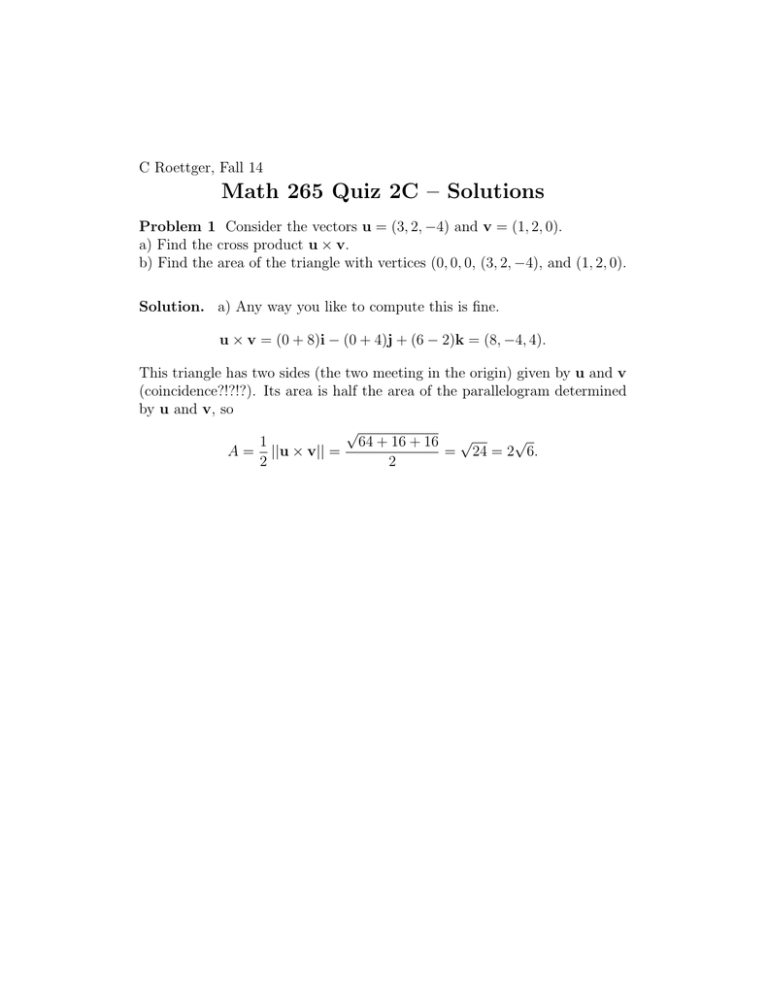
C Roettger, Fall 14 Math 265 Quiz 2C – Solutions Problem 1 Consider the vectors u = (3, 2, −4) and v = (1, 2, 0). a) Find the cross product u × v. b) Find the area of the triangle with vertices (0, 0, 0, (3, 2, −4), and (1, 2, 0). Solution. a) Any way you like to compute this is fine. u × v = (0 + 8)i − (0 + 4)j + (6 − 2)k = (8, −4, 4). This triangle has two sides (the two meeting in the origin) given by u and v (coincidence?!?!?). Its area is half the area of the parallelogram determined by u and v, so √ √ 64 + 16 + 16 √ 1 = 24 = 2 6. A = ||u × v|| = 2 2
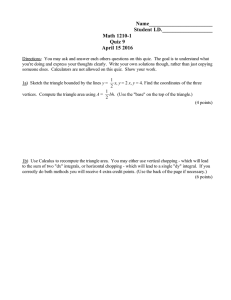
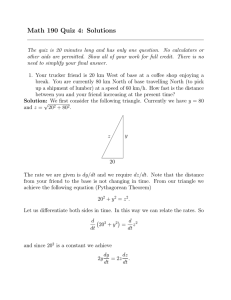
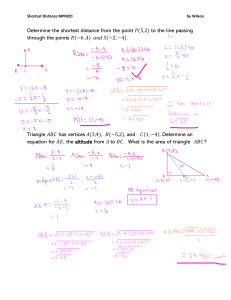
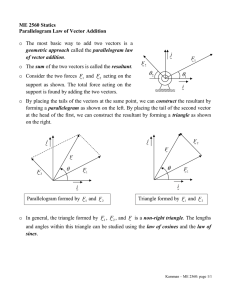


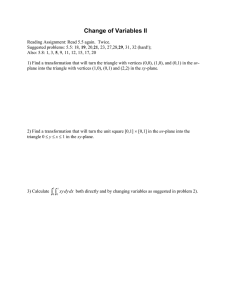
![Math 131 Practice Exam 3 on [ -1, 4].](http://s2.studylib.net/store/data/010538103_1-a851ef52d08f89241a99ddd9d94bbb2a-300x300.png)
